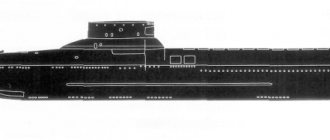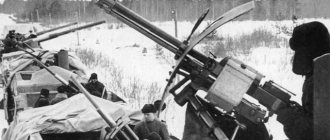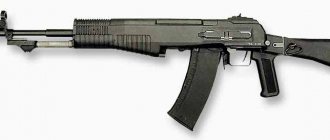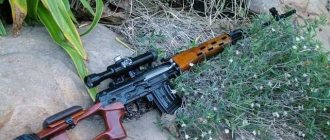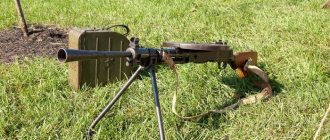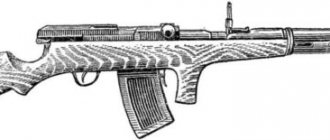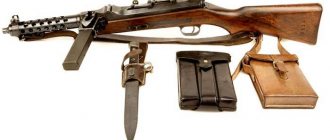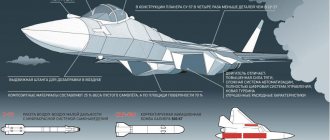Home "
byakin 05/24/2016 1467 198
0
to Favoritesin Favoritesfrom Favorites 1
In 2016, the world’s first machine gun, created by Vladimir Grigorievich Fedorov, celebrated the 100th anniversary. The significance of the works of V. G. Fedorov (1874-1966), an outstanding theorist and practitioner of weapons, the author of fundamental research in the field of the creation and combat use of automatic weapons, and a military historian, goes far beyond the creation of one sample. And yet the Fedorov assault rifle played an important role in the history of weapons. Let us dwell on some of the circumstances of its appearance.
Member of the GAU Artillery Committee, Colonel V.G. Fedorov. 1914
Russian nugget
A graduate of the Mikhailovsky Artillery School, Vladimir Fedorov began his service in 1895 as a platoon commander in the first Guards Artillery Brigade.
Fedorov was a real genius, who was keenly interested in improving existing types of small arms, as well as developing fundamentally new systems. In 1897, he entered the Mikhailovsky Artillery Academy to study. The officer completed his internship at the Sestroretsk arms factory, where he met the legendary creator of the “three-line” Sergei Mosin .
Article on the topic
Love three-line. How did the personal life of Sergei Mosin turn out?
After graduating from the academy, Fedorov was appointed to the artillery committee of the Main Artillery Directorate as a rapporteur in the weapons department. There he studied and systematized materials related to the history of small arms and bladed weapons used in the armies of the world in the 19th century.
At the turn of the 19th and 20th centuries, weapons designers were fascinated by the problem of creating automatic weapons. In Russia, as often happens, at the state level they reacted coolly to new trends, so work on the first Russian automatic rifles became the work of lone enthusiasts. The most successful of them was Vladimir Fedorov.
V. Grigoriev.
GENERAL OF THE GUNSMAN REGIMENT Fedorov Vladimir Grigorievich
Fedorov Vladimir Grigorievich was born on May 15, 1874 in St. Petersburg in the family of the caretaker of the building of the Imperial School of Law. After graduating from high school, the young man entered the cadet school, after graduating from which in 1895 he served for two years as a platoon commander in the first guards artillery brigade. Interest in the achievements of science and technology in the field of weapons then led him to study in 1897 at the Mikhailovsky Artillery Academy. He completed an internship at the Sestroretsk Arms Factory, where he met the head of the plant, a famous designer of small arms, in particular, the famous three-line rifle of the 1891 model, Sergei Ivanovich Mosin. In 1900, after graduating from the academy, Fedorov was appointed to the Weapons Department of the Artillery Committee as a rapporteur of the weapons department. From the pen of a young scientist, a winged aphorism, matching Suvorov’s, was born: “After the banner, the most expensive item for a soldier is the rifle.” This saying becomes, as it were, the motto of his entire life. Having gained access to the archival and official materials on small arms and edged weapons in Russia and foreign countries stored in the department, in 1901 he began to publish the work “Armament of the Russian Army for the 19th Century” in the “Arms Collection” (published as a separate edition in 1911). History has assigned Fedorov’s scientific treatise “Automatic Weapons” the role of the first textbook on weapon automation. In it, the author took it upon himself to assert that automatically operating hand-held small arms are weapons of the near future. In 1906 V.G. Fedorov designed his first automatic rifle based on the Mosin three-line rifle. The choice of the prototype was due to the fact that by that time there were over four million Mosin rifles in Russia, and therefore converting it into an automatic rifle seemed more promising than creating a completely new design. At the beginning of 1906, Staff Captain Fedorov submitted to the artillery department a project for redesigning the S.I. repeating rifle. Mosin to automatic. If a successful model were created, all the rifles available to the troops, totaling about 4 million, would be modernized in a short time. The author of the project was allowed to carry out experimental work in Oranienbaum, in the workshops of the officer rifle school, and a civilian mechanic, Vasily Degtyarev, was assigned to help. But the Mosin system, like a living organism, rejected artificial transplantation of foreign organs. Convinced of the futility of his attempts, Fedorov introduced into the design of the rifle the original principle of locking, without turning the bolt, and a movable barrel without a box. In 1907 V.G. Fedorov, with the active participation of another famous future gunsmith designer, and at that time a mechanic at the experimental workshop at the Officer Rifle School (OSSh) of the Sestroretsk weapons training ground, Vasily Alekseevich Degtyarev, began work on the original design, which lasted almost four years. The inventor and craftsman spent years of hard work before the weapon began to fire properly. In 1911 - 1913, he designed automatic rifles chambered for a standard 7.62 mm cartridge and a 6.5 mm cartridge of his own design (1913), thereby anticipating the idea of using an intermediate cartridge for automatic weapons. In September 1912, the Russian automatic rifle V.G. Fedorova earned the approval of the commission. In 1913, 150 rifles of 7.62 mm caliber and 20 rifles of 6.5 mm caliber were ordered from the Sestroretsk plant. The designer of the system was awarded the Mikhailovsky Prize, and with it a gold medal. The outbreak of the World War suspended all experimental work carried out by Russian gunsmiths. By decree from above, the newest weapon, invented by Fedorov with the participation of Degtyarev, was discontinued. In August 1914, Vladimir Grigorievich left with a special delegation to Japan. The country of the “Rising Sun” agreed to cede the Arisaka rifles, along with ammunition, to its new ally. The Russian army experienced a catastrophic shortage of rifles and ammunition. On a huge front, stretching from East Prussia to the borders of Romania, entire divisions were under fire with nothing to shoot from. Returning from Japan, Fedorov organizes workshops for collecting and repairing weapons in the front line. In the fall of 1915, as part of a military mission, Fedorov made a trip on board an English cruiser from Arkhangelsk to London for the conference of allied nations. Only after humiliating negotiations did the Entente powers agree to transfer rifles to Russia, but of outdated models. While then in France, members of the Russian mission undertook a trip to the sites of battles on the Marne River. In the trenches at Mont-Saint-Eloi, Fedorov observed how one soldier firing from a Chauchat light machine gun was able to replace 15 infantrymen firing from a rifle. Then he decided to convert his rifle into a submachine gun, which would become the main weapon of the infantry. Colonel Shosh, showing his workshop, amazed the visiting guest. The workshop had all the necessary equipment and looked like a scientist's laboratory. Russian gunsmiths did not even dare to dream about such conditions. Against the background of the contrasts between the West and Russia, it became obvious to an intelligent observer that military power could not be created under archaic orders and without modern technology. Colonel Fedorov's report on the results of his trip to Europe contained important recommendations. First of all, he insisted on developing production of light machine guns and to implement this program he found it necessary to urgently build a machine gun factory. In 1916, already at the rank of major general, he modified automatic rifles of 7.62 and 6.5 mm caliber for continuous firing. The 6.5 mm rifle with a modified trigger mechanism and an attached magazine with a capacity of 25 rounds was called a “machine gun.” The gun differed from its own rifle in having a shorter barrel, a sight for shortened distances, the presence of a trigger mechanism for single and continuous shooting, and an attached magazine. The weapon fired 50 rounds per minute and weighed only 4.5 kilograms. This submachine gun later received the name Fedorov Avtomat. In July-September 1916, 50 automatic rifles and 8 Fedorov machine guns passed military tests at the secondary school in Oranienbaum. Head of the Oranienbaum Officer Rifle School, General N.M. Filatov called the gun invented by Fedorov an automatic machine. Rapid-firing and maneuverable weapons could enhance the combat effectiveness of the Russian infantry and save the lives of many soldiers. However, the tsarist government was unable to expand the production of weapons on a mobile basis. The company of the 189th Izmail Infantry Regiment conducted about a hundred shooting exercises at the shooting range and in the shooting range of the OSSh, after which on December 1, 1916 it was sent from Oranienbaum to the Romanian Front. In September 1916, the Main Artillery Directorate placed an order with the Sestroretsk plant for the production of 25 thousand machine guns of the Fedorov system, but later, due to wartime difficulties, the order was initially reduced to 9 thousand, and later completely withdrawn. In January 1918, V.I. Lenin signed a decree on the creation of the Workers' and Peasants' Red Army. In those days when revolutionary Russia began to form regular military units, the former tsarist general Fedorov, on orders from the Main Artillery Directorate, went to Kovrov to the machine gun factory under construction. Masters of Sestroretsky] V.A. were also sent there with him. Degtyareva[/anchor]. They were entrusted with a task of national importance: on the basis of the plant, which was built by Danish concessionaires for the production of submachine guns of the Madsen system, to produce machine guns of their own domestic design. To defeat the interventionists and White Guards, the young Soviet Republic needed weapons. In exchange for a brilliant military career, the revolution offered Fedorov a civilian position as an engineer. Having removed his general's shoulder straps, Vladimir Grigorievich, however, retained his love of weapons and loyalty to the Fatherland. The scientist, administrator and diplomat himself wanted to serve the people and help them revive industry.
City of Kovrov, st. Fedorova, 6
Vladimir Grigorievich Fedorov settled in this house immediately after his arrival in Kovrov - March 9, 1918. And this house was already familiar to him. The fact is that the designer had been to Kovrov before, in 1916, as part of the commission of the Main Artillery Directorate, when the Kovrov Machine Gun Plant was just beginning to be built. For that short period of stay in the city, he rented an apartment in this house on Dvoryanskaya Street, so when he came to the city again, he settled in a place that was already familiar to him.
F.D. Fedorov in the courtyard of the house
V.G. Fedorov rented an apartment in this building in the oldest part of the building, and the rest was also divided into municipal apartments. He lived here with his wife Faina Dmitrievna and his father. After the departure of V.G. Fedorov's house was cleared of apartments and given over to kindergarten No. 2... On October 14, 2014, the Museum of Nature and Ethnography was inaugurated here. Fedorov was the first director of the first Soviet machine gun factory and in this field proved himself to be an innovator in weapons production. “The exceptional difficulty of our work,” he wrote about the period of development, “was that the plant had to produce the first complete installation of the production of automatic weapons.” On July 10, 1919, a fire broke out at the Kovrov Machine Gun Plant, damaging some of the metal-cutting machines and premises. In the evening, Fedorov was arrested on suspicion of deliberate arson as a former tsarist general. True, on the guarantee of a group of Bolshevik workers, he was soon released. After this fire, a number of commissions worked at the plant to investigate the causes and consequences of the fire. And at the same time, the plant was transferred to the jurisdiction of the Central Administration of Artillery Plants (CPAZ). A board of the plant was created, the chairman of which was appointed Bolshevik mechanic A.M. Burukhin, and V.G. Fedorov became a member of the board and technical director. In February 1920, a sample of the machine gun was delivered to Moscow. Red Army commanders found the weapon “extremely useful from both a technical and practical point of view.” By the end of 1920, about 100 machine guns were manufactured; in 1921, production was increased to 50 units per month. The machine guns were used during the civil war in battles in the North Caucasus. It is also known that the fighters of the ski squad, commanded by Toivo Antikainen, were equipped with Fedorov rifles and machine guns. Having carried out a legendary raid through the forests of Karelia, the detachment overtook the White Finnish interventionists and defeated them on the shore of Lake Kimas. On July 13, 1921, by resolution of TsPAZ, the factory board was dissolved, and unity of command was established at the plant. From the leadership of V.G. Fedorov was removed and appointed chief consultant of the plant. In 1921, on the initiative of Fedorov, the first design and construction bureau of automatic weapons in the Soviet Union was organized at the plant. The bureau arose on the basis of a model workshop, where the most talented craftsmen were selected. The regimental gunsmith Georgy Semenovich Shpagin came here from the fronts of the civil war. The village blacksmith Sergei Simonov took his place at the vice. Their hands asked for work, and their minds sought knowledge. Vladimir Grigorievich broke old traditions and started new ones. He believed: “... in the design of weapons - in this highest stage of invention - working thought and working creativity can certainly bring vital benefits in the defense of the country.” Sergei Gavrilovich Simonov owns the famous phrase: “The collections of the Museum of the Armed Forces of the USSR contain more than a hundred samples of rifles, submachine guns, light machine guns, and carbines that I created. But only three of them were adopted by our army.” This is what it meant to choose the profession of a weapons designer. Nowhere is there such competition and such selection as is established and legalized in the arms business. Only the ideal perfection of the system is recognized here as a standard. When creating the bureau, Fedorov intended to seriously engage in scientific research. He, again the first in world practice, took up the solution of such an urgent problem as the unification of weapons. For unification meant progress in the weapons industry. Based on his machine gun, Vladimir Grigorievich prepared 9 standardized samples for testing. According to the conclusion of the Artillery Committee, the implementation of a new project by engineer Fedorov would make it possible to obtain all types of automatic weapons, from a carbine to a heavy machine gun, based on the same system, “which would represent colossal benefits...” In the early twenties, mechanic Georgy Semenovich Shpagin created their first inventions. Thanks to the socket device and the ball mounting of its design, Fedorov’s machine guns became the combat weapons of anti-aircraft gunners and tankers. Those initial classes, when PKB workers took their first lessons from foreigners, studying the design of automation based on their models, over time became a real academy where Kovrov gunsmiths were trained and became amazing masters of their craft. Here people from a working environment, genius inventors, Heroes of Socialist Labor V.A. received recognition and became known throughout the country. Degtyarev, S.G. Simonov, Georgy Semenovich Shpagin, State Prize laureates P.M. Goryunov, M.M. Goryunov, V.E. Voronkov and others. All of them gave the Armed Forces of the Soviet Union first-class weapons, which were equipped with ground troops, aviation, and navy. Fedorov could be proud of his fate, because his projects, scientific works and practical affairs were recognized by the revolution. In 1928, the USSR Central Executive Committee awarded him the title of Hero of Labor, and then awarded him the Order of the Red Star. In 1928, the V.G. rifle Fedorov was withdrawn from service. In 1931, Fedorov was recalled to Moscow. In some sources it is written about him that he was to work in the central apparatus of the Cannon-Weapons-Machine-Gun Association of the Supreme Economic Council, and in others for scientific work. In fact, he did not receive any full-time position. He settled on the quiet outskirts of Moscow, not far from the central airfield, where the Sokol metro station is now, and was involved in work only on a voluntary basis as a consultant or member of a commission on various issues. Sometimes he gave lectures, again on a voluntary basis. In such conditions, all he could do was study the history of the creation of firearms in Russia. His father was buried at St. John the Military Cemetery. But when V.G. Fedorov was transferred to Moscow in April 1931; he transported his father’s ashes to Moscow to the Golovinskoye cemetery, because the cemetery in Kovrov had already been destroyed by that time. His extensive knowledge and rich experience needed scientific generalization. Based on archival materials and conclusions drawn from his own practice, he wrote a two-volume study, “The Evolution of Small Arms.” The author showed with examples how time and wars modified weapons from a flintlock squeaker to a self-loading one, in which the rate of fire is set by automation, and how automation opened a new century in weapons making. In the pre-war years, another of his works was published - “Weapons making on the verge of two eras”, written in historical and memoir terms. It incorporates the result of the author’s 35 years of activity in the field of development and production of automatic systems. At the same time, Fedorov appeared in it as the first historiographer of the plant, awarded three orders and named after V.A. Degtyareva. Fedorov’s most famous work is “Classification of Automatic Weapons,” accompanied by an atlas of drawings. With amendments by Academician A.A. Blagonravov’s “Classification” remains an indispensable guide in our time for those who study, design and make pistols, carbines, machine guns, and machine guns. Vladimir Grigorievich is awarded the degree of Doctor of Technical Sciences and the title of professor. In 1942 - 1946 Fedorov worked as a scientific consultant in the People's Commissariat of Armaments and was a member of the commission for the consideration of new types of weapons. In 1943, the government awarded him the rank of lieutenant general of the engineering and technical service and awarded him the Order of Lenin. So the greatest of revolutions made Fedorov its general, the leader of a regiment of gunsmiths. His merits in achieving victory over Germany were also awarded the Order of the Patriotic War, 1st degree. In 1949, Fedorov’s book “On the Question of the Date of the Appearance of Artillery in Rus'” was published, in which he dates the first use of artillery in Rus' to 1382. In addition, he has written two books on The Tale of Igor's Campaign, which he analyzes from a military point of view. Retired in 1953. In the spring of 1954, when the public celebrated the 80th anniversary of Fedorov’s birth, a group of old Kovrov friends brought him their congratulations and gifts. The general, having retired, lived in a modest cottage near the Sokol metro station. When the guests were seated at the table, Vladimir Grigorievich said: “I am especially pleased to note in your greeting the words that my life, work and ardent love for the Motherland serve as an example for young people.” In the collection of Fedorov’s books, “The Tale of Igor’s Campaign” was kept in a prominent place. Already in old age, a man of the military profession turned into a literary critic and wrote a study “Who was the author of “The Tale of Igor’s Campaign” and where the Kayala River is located.” About the great monument of ancient Russian writing, he said: “We have few works of art in which weapons would be so colorfully glorified.” In the May days of 1964, when Fedorov turned 90 years old, central newspapers published a Decree awarding the country's oldest gunsmith with the second Order of Lenin. And on this day, a military publishing house published a book of his memoirs, “In Search of Weapons.” Vladimir Grigorievich, comparing the past and present, often expressed one very correct judgment: “If previously all matters were carried out by representatives of the tsarist bureaucracy in the quiet of offices, now the whole country, the whole people are called to the cause of defense.” Fedorov’s printed works, the list of which includes over 30 titles, absorbed the knowledge of many generations and contributed to the development of the science of small arms. By turning to them, specialists draw the necessary information from this treasury, learn to work and create systems that are able to quickly and accurately hit a target with a barrage of fire. Vladimir Grigorievich died on September 21, 1966 in Moscow and was buried at the Golovinsky cemetery. On January 6, 1978, in the house where Degtyarev lived, a memorial house-museum of V.A. Degtyareva. Design, labor activity of V.A. Degtyareva, V.G. Fedorov and other creators of first-class weapons that equipped ground troops, aviation, and navy are reflected in the exhibition hall. The exhibition hall previously housed two rooms in the female half of the house. The rest of the house is dedicated to the memorial complex.
Stand dedicated to Fedorov V.G.
Memory: - Armor Fedorov Street in the Central District of St. Petersburg, from Fontanka to Gagarinskaya Street, is named after Fedorov. - In the name of V.G. Fedorov was named after one of the streets in the city of Kovrov, where he lived (in the area of the bridge over the Klyazma River, along which the Ivanovskoye Highway passes; the previous names of the street were Proletarskaya Street, before the revolution - Dvoryanskaya Street). — Moscow Polytechnic College No. 47 bears the name of V. G. Fedorov.
Stele for gunsmith designers on the territory of the plant named after. Degtyareva in the mountains. Kovrov. On the stele are bas-reliefs of gunsmith designers: Vladimir Grigorievich Fedorov, Vasily Alekseevich Degtyarev, Georgy Semenovich Shpagin, Semyon Vladimirovich Vladimirov, Sergei Gavrilovich Simonov, Pyotr Maksimovich Goryunov, Mikhail Timofeevich Kalashnikov, Vasily Petrovich Gryazev, Arkad Shipunov Ia Grigorievich, Richter Aron Abramovich, Nudelman Alexander Emmanuilovich .
Bust of V.G.
Fedorov in the Oruzheynikov Square Awards: - Hero of Labor; — Two Orders of Lenin; — Order of the Patriotic War, 1st degree; - Order of the Red Star. Vladimir region during the Great Patriotic War Kovrov gunsmiths: - Fedorov Vladimir Grigorievich (1874-1966), designer. — Degtyarev Vasily Alekseevich (1879-1949), designer. — Simonov Sergey Gavrilovich (1894-1986), designer. — Vladimirov Semyon Vladimirovich (1895-1956), designer. — Shpagin Georgy Semenovich (1897-1952), designer. — Goryunov Pyotr Maksimovich (1903-1943), designer. — Mikhail Mikhailovich Goryunov (1912–1991) — Soviet weapons designer — Vasily Efimovich Voronkov (1899–1976) — Soviet weapons designer
"Prototype 1912"
In 1907, the designer published the book “Automatic Weapons” - the first large-scale theoretical study of the problem. By that time, Fedorov had created his first project, upgrading the Mosin “three-line” model 1891 into an automatic rifle. The creator believed that this option was very profitable, since it made it possible to remake weapons already in stock on a massive scale. The project received approval from the Artillery Committee, but Fedorov himself was soon convinced that this idea was a dead end, and it was necessary to create the design from scratch.
To help Fedorov, Vasily Degtyarev, a future outstanding Soviet weapons designer, Hero of Socialist Labor, was appointed as a mechanic from the experimental workshop at the Officer Rifle School (OSSh) of the Sestroretsk weapons range .
The development of a new type of automatic rifle took four years. Then her ordeal began. The rifle was left for a day in the rain, disassembled, lowered into a pond, transported on a cart along a dusty road, and then tested by shooting.
Fedorov's automatic rifle chambered for the Russian standard 7.62×54R cartridge (used in the Mosin rifle), known as the “prototype of 1912,” was awarded the Grand Mikhailov Prize. The Sestroretsk plant was ordered to produce 150 such rifles.
Photo courtesy of Kalashnikov.Media
Project selection
The use of the new cartridge was planned not only for machine guns, but also for self-loading carbines or weapons with manual reloading. The first design that attracted everyone's attention was the invention of Sudaev - AS. This machine gun went through a refinement stage, after which a limited series was released and military tests of the new weapon were carried out. Based on their results, a verdict was made on the need to reduce the mass of the sample.
After adjustments were made to the main list of requirements, the development competition was held again. Now the young sergeant Kalashnikov took part in it with his project. In total, sixteen preliminary designs of machine guns were submitted to the competition, among which the commission selected ten for subsequent modifications. Only six were allowed to make prototypes, and only five models were produced in metal. Among those selected, there was not a single one that could fully meet the requirements. The first Kalashnikov assault rifle did not meet the requirements for accuracy of fire, so development continued.
6.5 mm
Fedorov himself admitted that his product was imperfect. The experience of the Russo-Japanese War has shown that in the conditions of modern combat the importance of fire at long distances is lost, and the need to conduct high-intensity fire combat at short distances - from several tens to 300-400 meters - increases.
The weapon of an infantryman conducting close combat was supposed to become more compact, and allow him to conduct both single and continuous fire.
Fedorov drew attention to the fact that in Japan, and in a number of other countries, ammunition of a reduced caliber of 6.5 mm is successfully used.
Question answer
What would we have gotten as a result of the First World War?
One of the most difficult tasks for gunsmiths is developing an effective cartridge. Fedorov, having developed an automatic rifle in 1913, similar in design to a 7.62 mm rifle, also proposed a new 6.5 mm cartridge with improved ballistics. The Sestroretsk plant received an order for 20 new rifles, but all further work was stopped with the outbreak of the First World War.
The war showed the unpreparedness of Russian industry to fulfill large-scale defense orders. Just a few months later, the army began to experience a shortage of ammunition and shells, which had to be urgently compensated for by purchasing ammunition abroad.
Vladimir Fedorov was sent abroad in order to resolve the issue of purchasing everything necessary for the needs of the army.
Photo: courtesy of Kalashnikov.Media
Soviet Union assault rifles
The plan of Vladimir Grigorievich Fedorov, which consisted of reducing the power of the cartridge, was only able to be carried out in the USSR, when the salvos of World War II died down. Automatic weapons of the post-war period developed in two directions: rifles (automatic and self-loading) and submachine guns. In the forties, the West had already developed the first weapon that allowed the use of reduced-power cartridges; the Soviet Union did not want to lag behind in anything. The German MKb.42 and the American M1 self-loading carbine were in the hands of the Union as active European models.
The authorities decide to immediately develop a lightweight intermediate cartridge and the latest weapons capable of using such ammunition as efficiently as possible.
"Submachine guns are more important nowadays"
Returning to Russia in January 1916, the designer writes a report on the results of the trip: “It is not automatic rifles that are being ordered, but submachine guns, which, in my opinion... are currently of undoubtedly greater importance than the mentioned rifles... Even if we and there was... a completed automatic rifle... it would be inappropriate to establish its production in factories... I believe that for our army the only question is the need for the widest testing in combat conditions of various systems of submachine guns and automatic rifles, and... it is necessary to immediately order a certain number up to 3 or 5 thousand automatic rifles, adapted for continuous shooting and having a magazine for 20–25 rounds... To set up production, it is necessary to look for a private workshop.”
It is important to note that the expression “automatic”, familiar to modern citizens, for a long time was the lot of theoretical designers. Much more often, such developments were called “machine guns.”
Article on the topic
"Daddy" caliber 7.62. History of the legendary PPSh
Fedorov receives the go-ahead to remake existing samples of his automatic rifles.
While maintaining the basic circuits and mechanisms of the automatic rifle, the designer introduced changes to the trigger mechanism, introducing a fire type translator, which made it possible to conduct single and continuous fire. A removable box magazine of increased capacity with a staggered arrangement for 25 rounds of 6.5 mm and 15 rounds of 7.62 mm was also developed. The weapon's automation worked due to the recoil of the barrel during its short stroke. The barrel bore was locked using locking larvae (clutch cheeks), which rotated in a vertical plane.
There was also the possibility of installing a bayonet on the weapon. The presence of a bayonet and a strong butt made it possible to use the machine gun in hand-to-hand combat, where, due to its smaller dimensions, it was more convenient than a rifle.
Photo courtesy of Kalashnikov.Media
Kalashnikov's invention
By May 1947, Mikhail Timofeevich presented an already modified version of his product - AK-46№2. The first Kalashnikov assault rifle had many differences from what we are used to calling an AK today: the design of automatic parts, the reloading handle, the fuse, the fire selector. This model was presented in two versions: Ak-46№2 with a permanent wooden stock, intended for use in infantry, and AK-46№3 with a folding metal stock - a version for paratroopers.
At this stage of the competition, Kalashnikov assault rifles took only third place, behind the models designed by Bulkin and Dementiev. The commission again recommended that the weapon be refined, and the next stage of testing was scheduled for August 1947. The designers of the machine gun, Mikhail Kalashnikov and Alexander Zaitsev, decided not to modify, but to completely redesign the weapon. This step paid off. The AK-47 left its competitors behind and was recommended for mass production.
The Kalashnikov assault rifle passed military tests and was accepted for mass production, despite the fact that complaints about the accuracy of fire were still relevant. The solution was this: fix the problem in parallel, without delaying the release of the series. In 1949, on June 18, the first assault rifle of the USSR, developed by Kalashnikov, was put into service according to the order of the Council of Ministers of the USSR. It was produced simultaneously in two modifications: with a wooden and folding mechanical stock. Thus, the weapon was suitable for use in both infantry and airborne troops.
Since 1949, the Kalashnikov assault rifle has undergone more than one modernization to arrive at what we know it as today. The fact that the advent of new types of weapons did not force him to give up his position clearly demonstrates how great this invention was. Many countries appreciated it.
Japanese cartridge and Russian barrel
The main problem remained the same - lack of ammunition. There was no way to establish mass production of 6.5 mm Fedorov cartridges. But among the foreign weapons purchased by Russia were 6.5 mm cartridges for Japanese Arisaka rifles. In addition, the production of such ammunition was established by the Petrograd Cartridge Plant.
The Japanese cartridge was weaker than Fedorov’s original cartridge, but there was no choice. The designer adapted his weapon for Japanese ammunition, inserting a special insert into the chamber.
By September 1916, eight 7.62 mm Fedorov submachine guns with a 15-round magazine, three 6.5 mm with a 25-round magazine, and two with a 50-round magazine were assembled in the workshops of the Rifle Range of the Officer Rifle School. forty-five 6.5 mm automatic rifles.
In December 1916, as part of the 189th Izmail Infantry Regiment, a company of machine gunners, armed with submachine guns and Fedorov rifles, went to the front.
The combat use of the Fedorov assault rifle showed its high efficiency, and at the beginning of 1917, the Sestroretsk plant received an order for the mass production of “machine guns.”
Photo courtesy of Kalashnikov.Media
TTX
Country of origin: Russian Federation. Machine caliber: 6.5x50SR "Arisaka". Barrel length: five hundred twenty millimeters. Length of the machine: one thousand forty-five millimeters. Weight of the machine gun without magazine: four kilograms, four hundred grams. Magazine capacity: twenty-five rounds. Rate of fire: six hundred rounds per minute.
Fedorov's brainchild was used against the Finns
The revolution of 1917 led to the fact that production plans were not fulfilled. But Major General of the Tsarist Army Vladimir Fedorov himself turned out to be very necessary for the new government. In the new conditions, the Sestroretsk plant turned out to be located too close to the border with Finland, and further work was carried out at the plant in Kovrov, where Vladimir Fedorov and Vasily Degtyarev were sent in January 1918.
During the Civil War, the process of establishing mass production of machine guns was painful. Serial production began in 1919, but by the end of 1920, about 100 Fedorov assault rifles were manufactured. Only in 1921 the plant reached a production rate of 50 machines per month.
Article on the topic
"Hell's Mower": the most "bloodthirsty" machine gun in the history of wars
Vladimir Fedorov continued to work on improving his machine gun. Also thanks to him, the country's first small arms design bureau was created in Kovrov. This bureau developed several models of light machine guns, aviation machine guns, a number of tank machine guns, light heavy machine guns and anti-aircraft machine guns.
But let's return to Fedorov's assault rifle. In total, about 3,200 units of this type of weapon were produced. In 1928, the People's Commissariat of Armaments of the USSR decided to stop all work on weapons chambered for the 6.5 mm cartridge and to develop machine guns for the Red Army chambered for the classic 7.62x54R cartridge for our country.
Fedorov's assault rifles were transferred to warehouse storage. But during the Soviet-Finnish war of 1939-1940, units of the Red Army began to experience an urgent need for automatic weapons, and machine guns were urgently returned to the troops, where they again performed well.
"In that unfamous war." 10 facts from the history of the Soviet-Finnish war Read more
Writing activity
After the end of World War II, Vladimir Grigorievich Fedorov wrote a scientific book that talked about the appearance of artillery weapons in Rus'. It is in his writings that he writes that this type of weapon appeared and was first used back in the late 1300s.
In addition to his enormous work on the creation of weapons, Vladimir Grigorievich writes several books about “The Tale of Igor’s Campaign...”, in which he examines all events exclusively from the perspective of a serviceman, assessing them from a military point of view.
